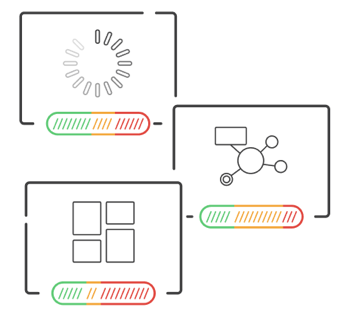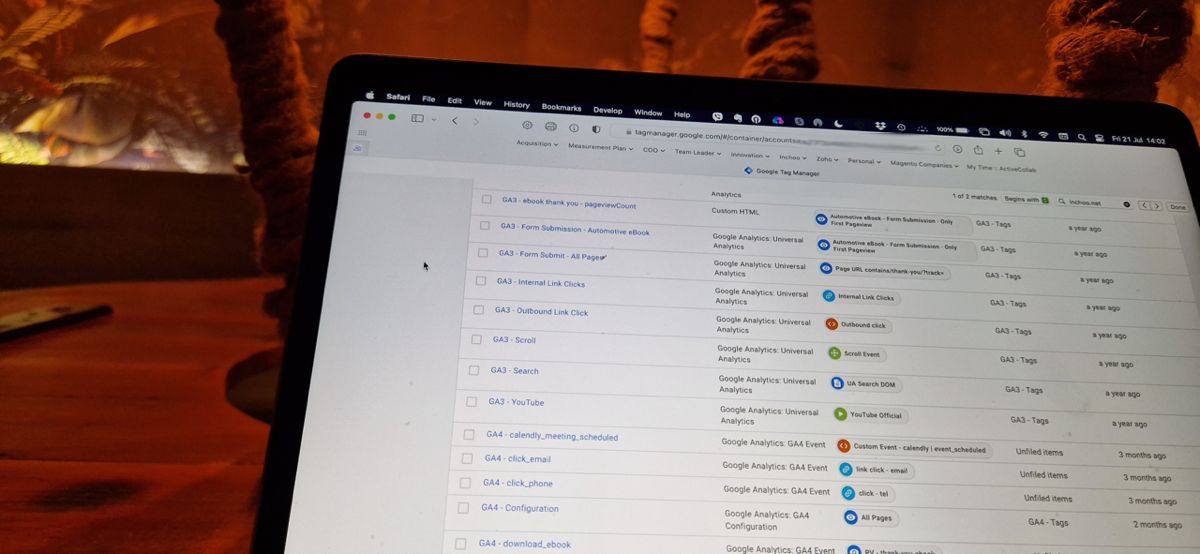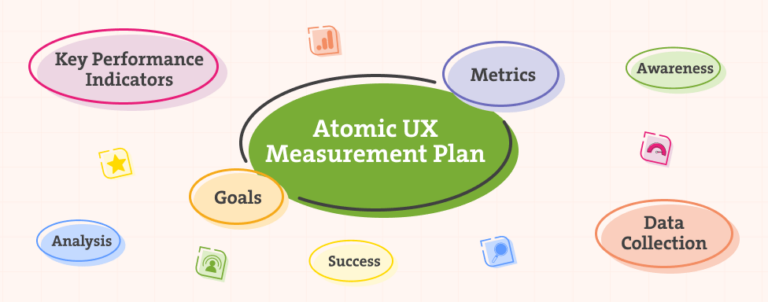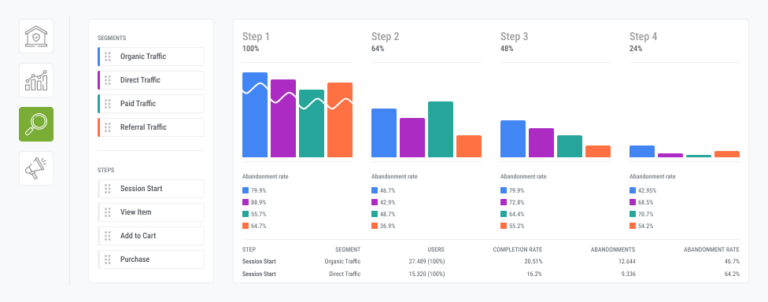When was the last time you cleaned up your GTM containers? You’re not alone if you don’t remember. Many e-Commerce managers often overlook the importance of regularly reviewing them, leading to various issues and challenges for the website. In this article, we will discuss how to know when is the time for your GTM containers to be purified and what benefits you’ll get from that. Let’s begin!
Is It Time for a Clean Up?
As you explore your tag list in your GTM container, you come across references to the tools or actions you know you are no longer using. That may be a sign your GTM containers need to be refreshed, and you probably have some old and irrelevant tags waiting to be removed. And this is just one scenario that indicates it’s time to give your containers a good cleanse. Numerous problems associated with GTM containers might negatively impact your site’s performance. That is why cleaning them up is one of Google Tag Manager‘s best practices.
Furthermore, you may encounter other challenges with e-Commerce tracking, such as inaccurate transaction tracking or wrong product reporting data in Google Analytics and other reporting tools. That will generate communication issues between you and your customers due to a lack of necessary information. As a result, you will eventually miss out on an opportunity to convert your users to clients, which is something no business owner wants for their company, isn’t it?

In addition, if your GTM containers have been shared with other agencies over an extended period, they almost certainly lead to a need for cleaning. Each agency has probably put its tags, variables, and triggers into the container, resulting in plenty of them standing there (often without a purpose). Some are no longer needed and take up space, causing your site to be slower. It would be beneficial if you reviewed all of the agencies’ tags and deleted the useless ones at the beginning. That will save you some time in the future while also reducing the likelihood of potential difficulties.
Finally, there’s also a chance you have several similar tags under the same trigger. This wastes space and can be confusing, so you should group them to boost your site performance.
5 Key Benefits of Cleaned GTM Containers
Now that you know when to tidy your GTM containers, let’s discuss why. The answer is pretty simple. Cleaning them up will help solve the difficulties mentioned above and, at the same time, provide significant benefits to your website. Here are the top five advantages of cleaned GTM containers:
- Improved site speed
- Improved site performance
- Better user experience
- Accurate data tracking
- Enhanced efficiency
Improved Site Speed
There’s nothing worse than a slow website, right? Many users tend to abandon slow websites due to the frustration they experience, often resulting in them never returning. You don’t get a second chance to make the first impression, so you must do it right.
By tidying up your Google Tag Manager containers, you will eliminate all the unnecessary tags, variables, and triggers that caused the site to be slow. If your site loads quickly, you will likely gain more visitors and higher conversion rates. Even a tiny metric as ms can have a significant impact on your business, as seen with Amazon’s reported 1% sales decline for every 100 milliseconds of increased page load time.
Improved Site Performance
 Site performance is directly related to the site speed. By improving both, you will influence your bounce rates, user satisfaction, SERP ranking, conversions, and revenue. Of course, more than organizing your GTM containers is needed for both factors to be optimized, but it is a necessary step that is often overlooked.
Site performance is directly related to the site speed. By improving both, you will influence your bounce rates, user satisfaction, SERP ranking, conversions, and revenue. Of course, more than organizing your GTM containers is needed for both factors to be optimized, but it is a necessary step that is often overlooked.
We’ve seen many cases where 150kb code scripts for some tools are loaded for years on every page, although the company is not using them anymore. But they are still in the container, affecting the site performance.
Better User Experience
Additionally, by enhancing your website’s speed and performance, you can provide a better user experience. If you remove unnecessary tags and optimize the container, users can enjoy a faster, more efficient website experience, leading to increased engagement and higher conversion rates. This fosters customer loyalty, which is the ultimate objective of any business.
Accurate Data Tracking
Another benefit for your site is accurate data tracking. We mentioned earlier that many challenges with tracking in e-Commerce can happen due to GTM containers full of old and outdated components. If you regularly clean them from tags, variables, and triggers that are no longer needed and keep the rest updated, Google Tag Manager will more likely track relevant and accurate events. This will ensure that the data received from the website is correct and that it finds its right path to the different tools you are using. You’ll be more confident in your decisions because you have accurate data to rely on.

Increased Efficiency
The final, but not less significant, benefit of cleaned GTM containers is increased efficiency. If you think about it, it’s a logical result of all the benefits listed above. Your site speed and UX are great, and you have accurate data to track. With all this information at your fingertips, making the right business decision becomes easier. Good business decisions lead to improved business.
This is just a set of benefits of organizing your Google Tag Manager containers. Managing your container size ensures that your GTM performs at its best. However, it’s important to understand that achieving these five benefits requires more than simply cleaning up your GTM containers. It is a result of multiple optimizations and continuous tracking, but this step is necessary, although it is often skipped.
Need Help with GTM? We’ve Got You!
Managing tags, triggers, and variables is hard. Maintaining accurate containers is even harder with constant testing, version control, and documentation needs. But decontaminating GTM containers is crucial for your site to function properly, although it is frequently overlooked and neglected. Our goal with this article was to increase awareness about the need to maintain them, and we hope we succeeded.
If you’re unsure how to clean up your Google Tag Manager containers properly or where to begin, no worries; we’re here to help! Our team has extensive experience and knowledge in GA and GTM and would be happy to assist you in improving your business. Learn more about our GTM service by clicking here!





